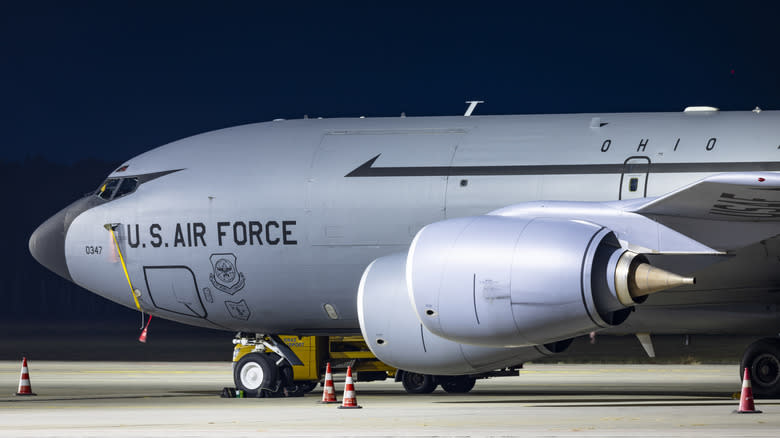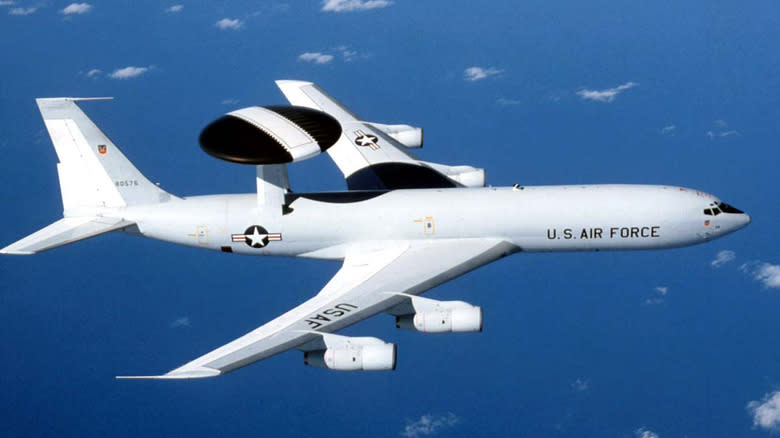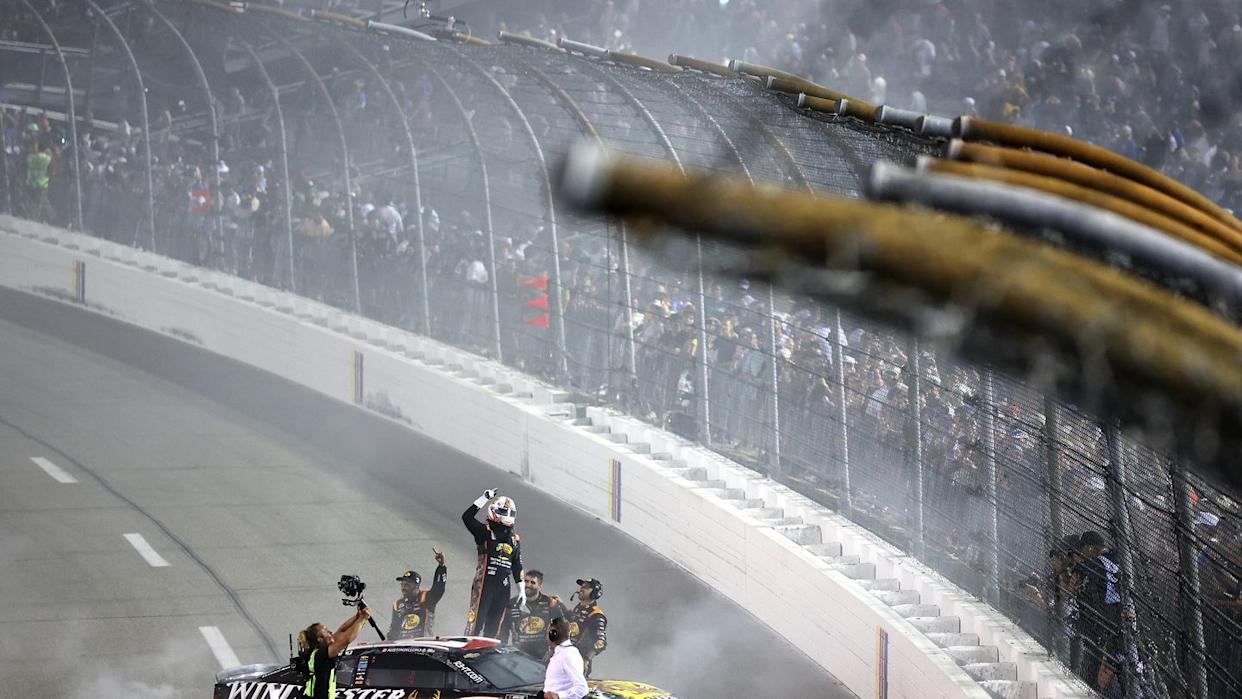
The role of Boeing's 707 in modern commercial aviation simply cannot be overstated. It was the first successful jet airliner outside of the Soviet Union, and by 1955, more Americans were traveling by plane than by train for the first time ever. A similar milestone was checked in 1957, when more passengers crossed the Atlantic Ocean to and from Europe on jets than by ship, even fast ships like the SS United States. The next year, the Pan Am completed its groundbreaking transatlantic flight from New York to Paris with a B707.
In the end, the Boeing 707 may have been a little too successful, because its single-aisle design couldn't accommodate the massive number of passengers who suddenly flocked to air travel. Not to mention that its four engines were both fuel-thirsty and noisy compared to modern advancements at the time. The last U.S.-based airline to fly the Boeing 707 was Trans World Airline in 1983, while Iran's Saha Airlines took the last civil 707 flight anywhere on the globe in 2013.
According to a Facebook post from the aviation news site Flight Drama, a total of 79 Boeing 707 jets are still flying today, albeit all for government or military organizations, not scheduled passenger flights. Presumably, that doesn't account for the KC-135 tanker variant, which still numbers in the hundreds. These aircraft, while old, are prized for their durable construction, versatility, and long cruising range. To that end, many have been updated with new engines and electronics to keep them viable.
Read more: These Are The Best Engines Of All Time, According To You
Budget Is Also A Factor

One of the U.S. military's oldest aircraft, excepting maybe the B-52 bomber, is the aforementioned KC-135. Nicknamed the Stratotanker, this plane was developed simultaneously with the 707 platform. Indeed, the first KC-135 jets took to the skies in 1956, a year after Chevy's small-block V8 engine made its splash debut. Instead of passengers or cargo, the KC-135 carries more than 31,000 gallons of jet fuel, which it dispenses to other aircraft like fighter jets and bombers mid-air at speeds up to 125 mph. A newer Boeing product, the KC-46 Pegasus, was slated to replace the aging KC-135 en masse, but it proved problematic on multiple levels, giving the KC-135 a longer lease on life.
Another Boeing 707 variant that's still in service with the U.S. military is the E-3 Sentry. As of 2022, the U.S. Air Force had a fleet of 31 E-3 Sentry Airborne Warning And Control System (AWACS) jets, the most recent of which was delivered in 1984. The E-3 Sentry is pretty much a flying radar station, with the ability to track ships, other planes, and missiles.
In the near future, that role will fall largely to space satellites instead of airplanes. But in the meantime, the Air Force is facing budget cuts that prevent wholesale replacement of the aging E-3 Sentry with the B737-based E-7 Wedgetail as an interim measure. In a recent hearing before the Senate Appropriations Committee, Sen. Lisa Murkowski of Alaska stated, "The E-3 fleet [is] barely operational now, and ... you've got a situation where you're not going to be able to use more duct tape to hold things together," as reported by TWZ.
Want more like this? Join the Jalopnik newsletter to get the latest auto news sent straight to your inbox...
Read the original article on Jalopnik.






Comments